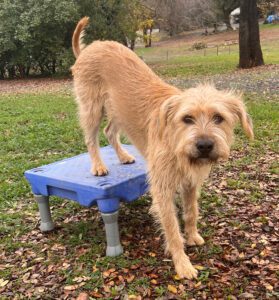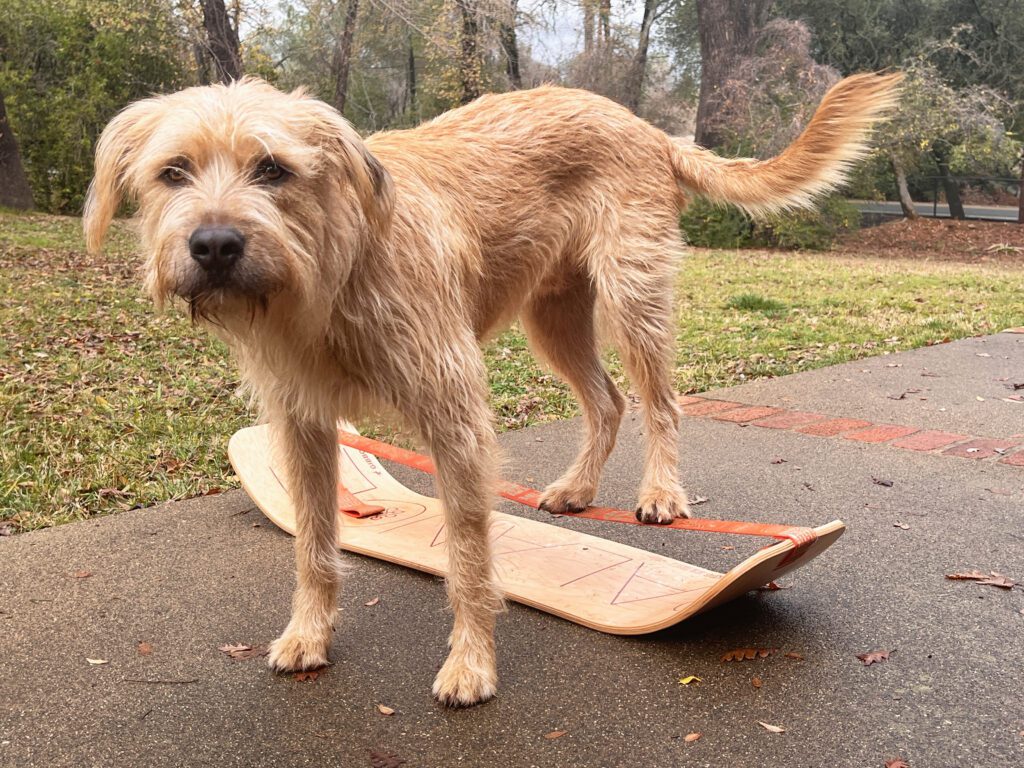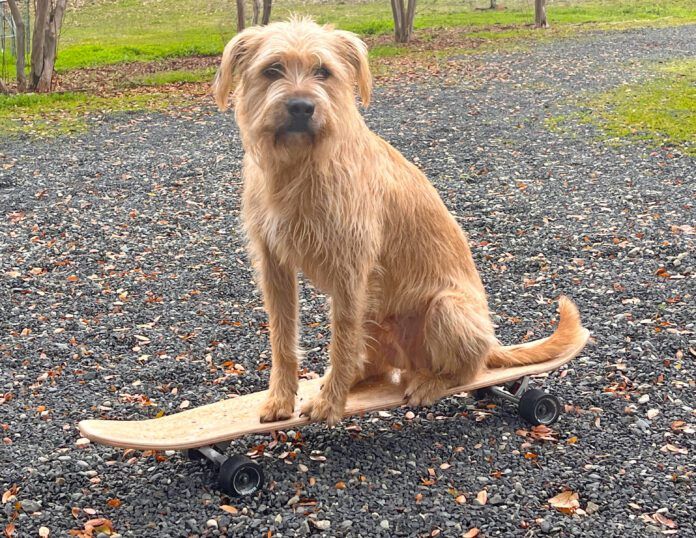You probably already know that I’m a huge fan of training – and while I am also a proponent of teaching dogs a few key behaviors that will help you spend time together, such as sit, come, touch, wait, stay, and back up, I also love teaching my dogs to do utterly useless things for the sheer fun of learning and working together. In the process of figuring out how to best get my dog to do something specific, reinforcing his efforts and doubly reinforcing efforts that are increasingly closer approximations of the goal behavior, I learn what motivates him to try and keeps him in the game. He shows me what really doesn’t compute for him and what makes him feel like quitting, and, in contrast, what sorts of things make our activity fun for him. Teaching him a new behavior, or a new way to do a behavior, turns into a highly interactive and highly enjoyable communication session.
Both of my dogs enjoy training, but 8-year-old Woody has a much shorter period of enthusiasm for sessions of learning something entirely new, and he’s much quicker to quit if he can’t figure out the goal behavior within a few guesses. With Woody, I have to keep my energy and rate of reinforcement very high, and the increments of improvement very low, to shape a new behavior.
Boone is the opposite: He shows an incredible amount of concentration and willingness (for a just barely 2-year-old dog) to persevere; he often keeps offering behaviors long after I’ve run out of treats and called our session done for the day. He will also spontaneously offer some semblance of a behavior we’ve worked on in new and creative ways at the most random times, to my delight and enjoyment. Recently, he offered a new behavior that was so funny I have to share it with you.
As a youngster, Woody learned to back up on cue (“Back!”) very easily and quickly, but I struggled with getting Boone to offer the same behavior. I tried all the techniques I could think of, and all the variations of luring, shaping, and capturing. No matter how I tried to lure Boone backward, or move into his space to try to get him to take even a tiny step back with a single paw, he would either bow or lay down or do a quick spin. And forget capturing; if he thought treats were on the table, he wasn’t going to move an inch away from me!
Then I saw a video of a trainer who taught her dog to “target” with his back feet, enabling her to use a mat or low platform to get her dog to back up onto the target and hold his position there. Boone already knew how to touch things with a front paw on cue (“Touch!”), and he knew “Up!” as a cue to jump up onto something. So I set about teaching him to touch something with a back paw, and then shaped that into stepping up onto something with both back paws. He would very handily (pun intended) reach behind himself with a back paw and, upon making contact with whatever it was, would back right onto it. The cue for this behavior became “Back up!” – and for whatever reason, he finally extrapolated that just “back!” meant to back up (with no particular target). Voila!

Now I can ask him to back up – but he still favors backing up onto things – perhaps because that’s where the lightbulb finally went on for him and he understood where I was going with all of this. Now, if there are treats around, or he just wants some attention, he’ll back onto something with his back feet and look for his reward. “Hey Nance, look at me! What will you give me for this?”
I have in my living room a device called a balance trainer. It’s essentially a four-foot-long slackline, which various athletes (and some of us older people) use to hone (or just maintain) their balance. Often, when we’re watching TV in the evening, one or the other of us will use the balance trainer while we’re watching a movie, or waiting for the popcorn to pop. Recently, while we munched popcorn during a movie, Boone decided that the balance trainer was his ticket to getting some of that popcorn. Spontaneously, he walked over to the balance trainer, turned to face me, and started deliberately reaching behind himself with his back feet, trying to step onto the slackline. That certainly took my attention off the movie!
I watched, somewhat incredulous, as Boone repeatedly fished about with a back paw, feeling for the two-inch wide webbing of the slackline and, when he made contact with it, placing a back paw onto the web and putting weight on it. Sure, that absolutely gets you some popcorn, you loony Boone! And within a few more repetitions of his one-paw-in-contact, when I held back from reinforcing him for that, he got one paw balanced on the line and started reaching with his other back foot. Within two minutes, he could balance with his back feet both standing on the wobbly line.

This behavior was 100% his idea and invention, born out of a desire for attention and treats – as well as a certainty and trust that he’d get both if he could think up something interesting enough (and not rude, like openly begging). And while some people may find an attention-seeking dog to be a pain in the butt sometimes, I love his creativity and don’t mind letting him know how amusing I find it.
I don’t know that there will ever be a use for some of these silly behaviors, but interacting while I reinforce and shape them for our amusement keeps us connected and understanding each other – and that’s what “training” is really all about, in my opinion.







OMGosh, I love it!! What a goofball. And a creative one at that. Thanks for sharing this with us.
I love this!! Way to go, Boone! I have two dogs trained to step up on a 4-inch platform. They race each other to see who can get there first and shove the other one off. Branson, my Irish Setter, will “step,” i.e. put his front feet up on anything that has the possibility of earning him a treat. Couches, chairs, buckets, large rocks, even actual steps! We’re working on the backing up part (congrats, Boone!). He’ll back halfway across the room but hasn’t quite grasped lifting his back feet onto whatever is behind him.
What he really likes is slamming his paw on one of several soccer balls lying around the yard. If I kick it, he’ll chase it, then try to scoot it under his body to keep it out if reach. As soon as he masters that head butt thing, we’re gonna get him a tryout with the LA Galaxy…
Aren’t you glad Boone is a foster fail? And to think you even considered not keeping him.
100%! He’s a joy.